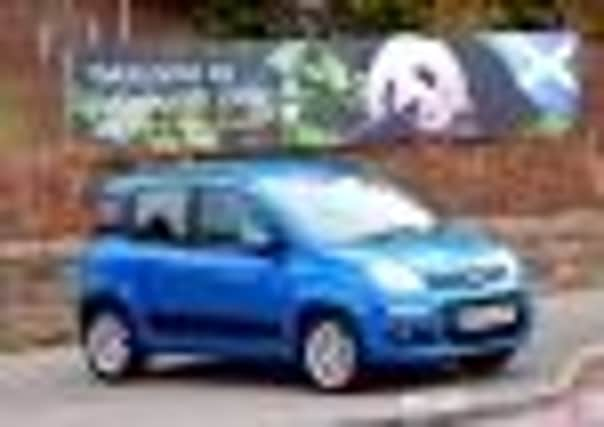Road test: Trust Fiat to Panda to the masses


When it was launching the third generation of Europe’s best-selling supermini, Fiat knew the capital was the obvious choice, especially as the Panda shares its name with the celebrity residents on Corstorphine Hill. While Tian Tian and Yang Guang happily feasted on their bamboo, their Italian namesakes were given the once-over just ahead of their appearance in the country’s showrooms.
OK, their welcome in the city wasn’t quite on the level of the Chinese pair at the tail end of last year, but the car is likely to go down well with buyers who will like the practicality, economy and efficiency of the new car, combined with the Fiat element of Italian style and quirkiness.
Advertisement
Hide AdAdvertisement
Hide AdAt first glance, it’s not that different on the outside. Fiat say it has taken the best of everything from the previous models without changing the soul of the car. It has the same distinctive profile with the steeply raked back end, but it’s been given a beefier, more rounded and robust look to make it what Fiat calls a “soft cube”.
That’s particularly true on the test car in Lounge trim, with flared wheel arches and roof bars. There’s some nice styling detail with the Fiat family name firmly fixed to the centre of the grille and the new-look Panda logo on each of the wheel centres and across the lid of the remarkably spacious boot, one of the biggest in its class.
It is on the inside, though, that the designers have had some fun and steered away from something resembling the bargain basement of a plastics warehouse. What they’ve come up with, especially in the working area of the driver’s eyeline, is something that looks and feels more than you’d expect from the £12,000 price tag. It projects a clean, plush and even sophisticated impression. The bold centre to the steering wheel dominates the scene which has clearly been well thought-out. All the controls are clear, simple and importantly in the right place, which is not always the case in other models in this entry-level segment.
It not only looks bigger on the inside, it actually is, with an extra 26mm legroom in the front and 5mm in the back. That adds up to 31mm, even though the new car is only 20mm longer than the old model. Two rear seats are standard and a middle seat is an option. A complete sliding back row of seats will be available from later this year. The seats are made of a new material and constructed to improve airflow around the driver and passengers’ backs, so that we can keep our cool in a steamy summer. The rear loadspace has been improved with a wider tailgate and a lower opening for easier access.
Storage seems to be the big issue on designers’ minds these days. Apparently we all carry so much stuff with us that we just can’t have enough cubby holes for our mobile phones, iPads, sunglasses, drinks, make-up, sweets, USB sticks and the like, so in the new Panda there are 14 “stuff” holders.
One bit of kit which is so often neglected by the stylists is the handbrake lever, which usually looks as if it has been thrown in as a necessary evil. On the new Panda, the handbrake has been made shorter, flatter and wider to release space in front, behind and underneath to accommodate some more of those vital storage spaces. For a functional piece of equipment, it’s damned attractive.
The new range starts with the Pop TwinAir with its small 65 bhp engine at £9,400 on the road but for less than £2,000 extra, the Lounge version comes with a huge amount of equipment as standard, including the Dualdrive electric power steering with a “City” function. Press the button on the dashboard and the steering becomes very light for parking manoeuvres or slow street travel.
The test car came with a £400 Techno pack, which lets you can link up Bluetooth equipment such as phones and MP3 players and operate them with voice control. Best of all, though, is the portable TomTom satnav which slots into a holder in the middle of the dash so there are no cables draped into the power socket but it can still be taken out for security.
Advertisement
Hide AdAdvertisement
Hide AdThe tiny TwinAir Turbo engine is a benchmark for new technology. It is quite remarkable, with only two cylinders churning out a surprising amount of power. Economy is excellent and the low CO2 means you pay nothing for road tax.An Eco button means you can restrict the power for even better economy.
It is a bit noisier and less smooth than the conventional four cylinder which is in the larger 1.2 and 1.3 options but it does mean that your Panda is doing its bit for the planet, so the four-legged ones can sleep soundly and satisfied that their four-wheeled namesakes have the world in safe hands.
VITAL STATS
CAR: Fiat Panda TwinAir 85 bhp Lounge
PRICE: £11,250 (as tested £12,145)
PERFORMANCE: 0–62mph 11.2 secs. Max speed 110 mph
MPG: 67.3 combined
EMISSIONS: 99 g/km £0 road tax